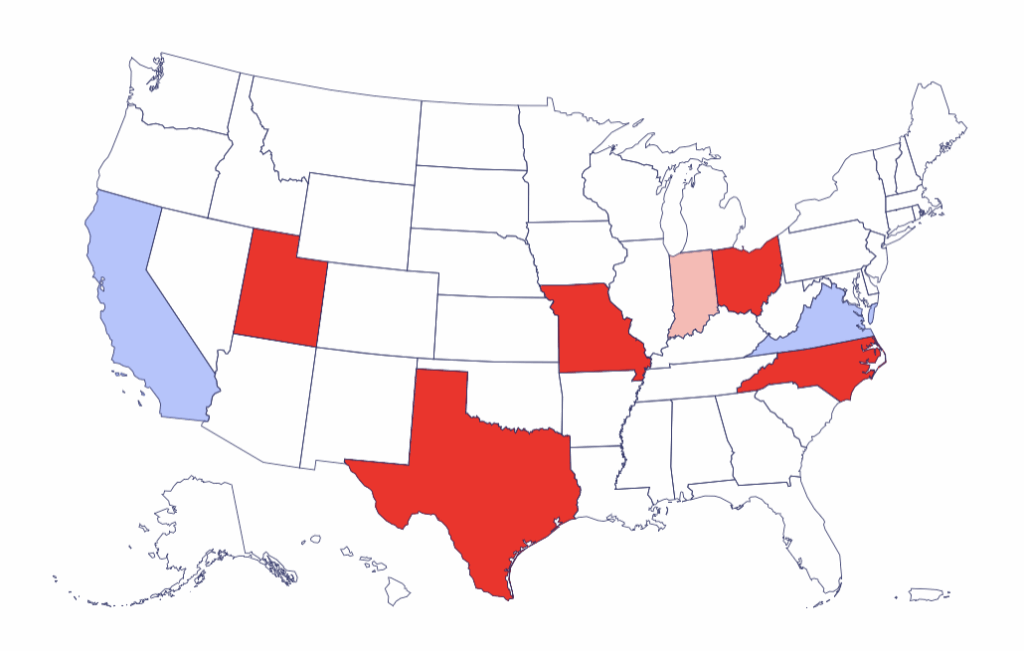Where Trump’s Redistricting Battle Stands Now

We’re now five months into President Donald Trump’s plan to rig the 2026 election by pressuring GOP-led states to draw more Republican congressional seats, and here’s what he has to show for his efforts so far: seven new likely GOP seats, pending challenges, with more perhaps on the way; a similar number of potential new Democratic seats; and a wide open Pandora’s box of redistricting litigation.
Three GOP-controlled states have so far redrawn maps at Trump’s request: Texas, Missouri and North Carolina. In all three states, voters are fighting back and challenging the maps in court. In Missouri, voters have an extra tool at their disposal; to Republicans’ great consternation, they’re organizing a citizen-led veto referendum that could see the map defeated on the ballot.
Get updates straight to your inbox — for free
Over 450,000 readers rely on our daily and weekly newsletters for the latest in voting, elections and democracy.
If upheld by courts and voters, the three Trump gerrymanders could net Republicans seven new congressional seats – five in Texas, and one each in Missouri and North Carolina. All seven of those gains come at the expense of minority voters.
Indiana could be the next GOP-controlled state to pass a gerrymander, with a redistricting special session set to begin soon. Two seats currently held by Democrats could be on the chopping block.
Two more GOP-led states have passed gerrymanders, but not solely at Trump’s request. Utah’s redraw was court ordered, and the new map, which is still being fought over in court, doesn’t net any gains for the GOP, which already holds all four of the state’s congressional districts. In fact, it could allow Democrats to pick up one seat.
In Ohio, lawmakers were required to do a redraw this year. The new map passed last week could flip two out of five seats currently held by Democrats.
Two Democratic-led states have entered the fray, arguing they’re fighting fire with fire. Unlike in the GOP-controlled states – where lawmakers have hastily passed new maps without voter approval – voters in California and Virginia will have the final say on whether they redistrict.
California voters are now casting ballots and will soon decide whether to pass Proposition 50, a measure that could allow the state to offset the possible GOP gains in Texas by creating five more Democratic seats.
In Virginia, Democratic lawmakers just completed step one of their own response to Trump gerrymanders, passing a proposed constitutional amendment that would allow them to redraw their maps. Lawmakers will need to pass the measure again next year, before voters weigh in. The state’s congressional delegation is currently made up of six Democrats and five Republicans.
And while it’s still unclear how many seats Democrats could net, Virginia Senate President Pro Tempore Louise Lucas (D) has hinted where she stands: in a social media post, she shared a picture of a Virginia license plate with the numbers 10-1.
What does it all amount to? Because of the slew of legal challenges and the need for voters to have their say in California, Virginia, and perhaps Missouri, the picture is still murky. But when all is said and done, Republicans look likely to come out of the redistricting fight netting at least a few seats from it.
And that leaves aside the impact of a Supreme Court ruling in Callais v. Louisiana, striking down or weakening a key part of the Voting Rights Act. If that happens, it would let some GOP-controlled states eliminate majority-minority districts currently held by Democrats — meaning even more pickups for the GOP.
To help readers monitor GOP gerrymanders and Democratic counter-moves, Democracy Docket launched a new redistricting tracker this week, complete with each state’s latest litigation status and details on how the delegation could change.